
by James Dean | Feb 23, 2025 | Blogs, Branding Design, Logo Designing, Marketing, Web Design, Web Development
How Much Should You Budget for Professional Logo & website Design?
Starting Mark:
Did you know that 94% of first impressions of a business are design-related? Your logo and website are the digital handshake of your brand, shaping how customers perceive your credibility and professionalism. Whether you’re a startup or an established business, investing in high-quality design isn’t just about aesthetics—it’s about driving growth. In this guide, we’ll break down the costs of professional logo and website design, explore factors that influence pricing, and share actionable tips to help you budget wisely. Let’s dive in!
Why Invest in Professional Logo Design and Website Design?
1. Brand Identity: Your First Impression Matters
Your logo is the face of your brand, while your website acts as your 24/7 storefront. Together, they create a cohesive identity that builds trust and recognition. A poorly designed logo or website can make your business appear unprofessional, pushing potential customers away.
2. User Experience (UX) Drives Conversions
A cluttered website or confusing navigation frustrates visitors. Professional designers prioritize UX, ensuring your site is easy to navigate, loads quickly, and guides users toward actions like purchases or inquiries. For example, a well-designed e-commerce site can reduce cart abandonment rates by up to 35%.
3. SEO and Mobile Responsiveness
Google loves websites that load fast, work seamlessly on mobile devices, and offer intuitive navigation. A professional designer ensures your site is optimized for search engines and responsive across all screens, boosting your visibility in search results.
Factors Influencing Logo Design Costs
1. Designer Expertise
- Freelancers: $200–1,500 (ideal for startups).
- Agencies: $1,000–10,000+ (includes research and strategy).
- DIY Platforms: $20–200 (limited customization, e.g., Canva).
2. Complexity of the Design
A simple text-based logo (like Google’s) costs less than a custom illustration or mascot (think Starbucks’ siren).
3. Revisions and Add-Ons
Most designers include 2–3 revisions in their packages. Need a brand style guide or vector files? Expect to pay 10–20% extra.
Factors Influencing Website Design Costs
1. Type of Website
- Basic Brochure Site: $1,000–5,000 (for portfolios or small businesses).
- E-commerce Site: $5,000–20,000+ (product listings, payment gateways).
- Custom Web Apps: $20,000–100,000+ (tailored functionality, like Uber).
2. Design Approach
- Template-Based (WordPress, Squarespace): Affordable but less unique.
- Custom Design: Higher cost for a one-of-a-kind site that aligns with your brand.
3. Functionality and Ongoing Costs
Integrations (e.g., CRM tools), plugins, hosting (50–50–200/month), and maintenance (100–100–500/month) add to long-term expenses.
Average Costs for Logo and Website Design
| Service |
Price Range |
| Logo Design |
$200–10,000+ |
| Basic Website |
$1,000–5,000 |
| E-commerce Website |
$5,000–20,000+ |
| Combined Packages |
Save 10–15% when bundling logo and website services. |
5 Budgeting Tips for Small Businesses
- Start with Essentials
Prioritize mobile responsiveness and a clear call-to-action (e.g., “Contact Us”).
- Compare Quotes
Get estimates from 3–5 designers or agencies to find the best value.
- Plan for Hidden Costs
Domain registration ($10–50/year), SSL certificates ($50–200/year), and stock images ($5–100/image).
- Future-Proof Your Investment
Allocate 10–15% of your budget for future updates (e.g., SEO tweaks or adding new features).
Cost vs. Value: Why Professional Design Pays Off
- Higher ROI: A polished website can increase conversion rates by 200%.
- Avoid Costly Redesigns: Cheap DIY solutions often require expensive fixes later.
Real-World Examples
- Startup Success: A coffee shop spent $3,000 on a freelance-designed logo and Squarespace site, attracting 500 monthly customers.
- Mid-Sized Growth: A skincare brand invested $15,000 in a custom logo and Shopify store, doubling online sales in 6 months.
- Enterprise Powerhouse: A tech company paid $50,000+ for a rebrand and custom web platform, securing a 40% increase in investor interest.
Conclusion
Budgeting for a logo and website design is about balancing cost and quality. While a basic logo might cost $200, and a simple website $200,and a Medium website $1,000, investing in professional services ensures your brand stands out and drives results. Ready to take the next step? Request a quote from a trusted designer today—it’s the first move toward building a brand that customers trust and remember.
Your logo and website aren’t expenses—they’re investments in your business’s future.

Logo Package Details
by James Dean | Feb 22, 2025 | Blogs, Branding Design, Digital Marketing, Logo Designing, Web Design
Branding Agency for Startups: How to Find the Perfect Match in 2025
Published on: 23/3/2025
Why Your Startup Needs a Branding Agency 🎨
Launching a startup is like setting sail on uncharted waters. You’ve got a great idea, but without a strong brand, you’re just another boat in a vast ocean. A branding agency for startups can help you stand out, connect with your audience, and build trust. But with so many agencies out there, how do you pick the right one? Let’s break it down.
What Does a Branding Agency Actually Do? 🤔
Before you go shopping for an agency, let’s get clear on what they bring to the table:
✅ Brand Strategy: Defining your startup’s mission, values, and unique positioning. ✅ Logo & Visual Identity: Crafting a logo, color scheme, typography, and overall brand aesthetic. ✅ Messaging & Tone of Voice: Ensuring consistency in how your brand communicates. ✅ Website & Digital Presence: Designing a website that aligns with your branding. ✅ Marketing & Social Media Assets: Providing the right content to engage your audience.
A great agency doesn’t just design a cool logo; it help tell your brand’s story in a way that resonates.
How to Choose the Best Branding Agency for Your Startup 🔍
Not all branding agencies are created equal, and choosing the right one is crucial. Here’s what you need to consider:
1. Start with Their Portfolio 📂
Would you trust a chef who’s never cooked a meal? Probably not. The same logic applies here. A good branding agency will have a portfolio showcasing their work. Look for:
- Designs that align with your vision.
- Case studies showing real results.
- Experience in your industry or with startups.
2. Check Their Pricing 💰
Startups usually have tight budgets, so pricing matters. Branding costs can vary widely—from a few thousand dollars to six figures. Consider:
- Do they offer startup-friendly pricing?
- Is there a clear breakdown of costs?
- Are they transparent about revisions and additional fees?
3. Evaluate Their Process 🛠️
A solid agency has a structured process. Ask them:
- What steps do they take from concept to completion?
- How do they ensure brand consistency?
- Do they involve you in the process, or just present a finished product?
4. Read Client Reviews ⭐
Client feedback is gold. Look for:
- Google reviews, Trustpilot, or Clutch ratings.
- Testimonials on their website.
- Any red flags about missed deadlines or poor communication.
5. Assess Communication & Chemistry 🗣️
A branding agency is your creative partner. If the vibes are off, collaboration will be a struggle. Consider:
- Are they responsive and easy to communicate with?
- Do they understand your startup’s vision?
- Are they excited about your project or just going through the motions?
Mistakes to Avoid When Hiring a Branding Agency 🚨
❌ Going for the Cheapest Option – Branding is an investment. Cheap work often means generic results. ❌ Skipping Research – Don’t just hire the first agency you find. Do your homework. ❌ Ignoring Cultural Fit – A branding partner should align with your startup’s energy and values. ❌ Not Setting Clear Expectations – Be upfront about your budget, timeline, and expectations.
Conclusion: Ready to Build an Iconic Brand? 🚀
Your startup’s success hinges on how well your brand connects with customers. A great branding agency can set you up for long-term growth by crafting a compelling identity. Take your time, do your research, and choose wisely!
by James Dean | Feb 22, 2025 | Blogs, Branding Design, Digital Marketing, Logo Designing, Web Design
Picking Your Design BFF: How to Choose a Killer Agency in 2025 (Without Losing Your Mind)
Struggling to find a design agency that gets your brand? This no-BS guide spills the tea on red flags, budget hacks, and questions to ask. Spoiler: No awkward first dates here.
Let’s be real: Choosing a design agency feels like swiping through Tinder for your brand. You’ve got the “show me your portfolio” small talk, the “what’s your budget?” awkwardness, and the fear of ending up with a “graphic design is my passion“ disaster. But 2025’s design world is wild—AI tools, TikTok-fueled trends, and agencies that promise the moon (but deliver MS Paint). Don’t panic. I’ve roasted 12 lattes and 30 years of writing chaos to help you dodge the cringe and find your brand’s soulmate. Let’s dive in.
In-House vs. Agency: Which Side Are You On?
Spoiler: It’s not a Marvel vs. DC battle. Here’s the tea:
In-House Team Pros ✅
- Control Freaks Unite: Need last-minute tweaks at 3 AM? Your team’s on it.
- Brand Whisperers: They live your brand’s vibe (and caffeine addiction).
- Cost Predictability: Salaries are fixed—no surprise invoices.
In-House Team Cons ❌
- Skill Gaps: Expecting Bob from accounting to master 3D animation? Good luck.
- Burnout Central: Overworked teams = meh creativity.
Design Agency Pros ✅
- Swiss Army Knife Skills: Need a logo, website, and Insta Reels? They’ve got specialists for all of it.
- Fresh Eyes: No “we’ve always done it this way” baggage.
- Scalability: Ramp up/down projects like a Netflix subscription.
Design Agency Cons ❌
- Budget Burns: Premium talent = premium prices.
- Communication Hiccups: Time zones, anyone?
TL;DR: If you’re a startup needing everything, go agency. If you’re Coca-Cola 2.0, build in-house.
The Ultimate Agency Vetting Checklist (No Boring Questions, Promise)
Forget “What’s your process?”—ask these instead:
- “Show Me the Worst Project You’ve Done”
(If they laugh and share a fail, they’re human. If they dodge, run.)
- “Can You Work With My Glitchy Tech Stack?”
(No one wants a Figma wizard who faints at WordPress.)
- “What’s Your ‘Oh Sh*t’ Backup Plan?”
(Deadlines get messy. Do they have a Plan B… or just prayers?)
- “Who’s My Day-One Contact?”
(If they say “the intern,” exit stage left.)
- “Do You Actually Understand Gen Z/AI/My Weird Niche?”
(Example: If you sell alpaca sweaters, can they meme-ify llamas?)
Red Flags That Scream “Swipe Left” 🚩
- Portfolios That Look Like 2012 Tumblr
- Vague Pricing Like “It Depends”
- Zero Case Studies (Did they even DO work?)
- Ghosting You for 3 Days
Conclusion:
Picking a design agency shouldn’t feel like defusing a bomb. Use this guide to filter the ”we’re a family” cringe from the legit pros. And hey, if you’re still stuck? [Book a Free Rant Session] with Articon. We’ll help you dodge the BS and find your perfect match—no ghosting, we swear.

by James Dean | Feb 22, 2025 | Blogs, Gaming, Logo Designing, Web Design
How to Choose the Right Design Agency for Your Brand (2025 Guide)
Published on: [23/3/2025]
Introduction
Picking the right design agency for your brand is like finding the perfect pair of shoes—if they don’t fit well, you’ll feel the discomfort in no time! Your brand’s visual identity plays a crucial role in business success, so choosing a design agency isn’t just about aesthetics—it’s about impact.
In this guide, we’ll break down the pros and cons of hiring an agency versus building a Freelance team, provide you with a checklist of must-ask questions, and give you actionable tips to make the best decision. Let’s dive in! 🚀
Freelance Team vs. Design Agency: Which One’s Better?
Before you start hunting for a design agency, it’s worth considering whether you need one or if an in-house team is the way to go. Here’s a quick comparison:
✅ Freelance Team Pros:
- Full-time commitment – They work only for your brand, ensuring consistency.
- Better internal collaboration – Direct communication with other departments.
- Faster revisions – No waiting in a queue for project turnarounds.
❌ Freelance Team Cons:
- Higher costs – Salaries, benefits, and software costs add up.
- Limited expertise – You may need multiple specialists for different tasks.
- Scaling challenges – More hiring is required when the business needs to grow.
✅ Design Agency Pros:
- Access to top talent – Agencies have specialists in branding, UX/UI, web design, and more.
- Cost-effective – Pay for services as needed, without long-term commitments.
- Scalability – Agencies can handle large projects efficiently.
❌ Design Agency Cons:
- Less direct control – You rely on external teams to understand your vision.
- Longer turnaround times – Depending on the agency’s workload, you might experience delays.
- Higher upfront costs – Premium agencies charge premium prices.
How to Select the Best Design Agency: Essential Checklist ✅
Once you decide an agency is the right choice, use this checklist to evaluate your options:
1. Check Their Portfolio 🎨
- Does their style match your vision?
- Have they worked with brands in your industry?
- Do they showcase versatility and creativity?
2. Ask for Case Studies 📂
- What results have they achieved for past clients?
- Can they provide measurable success stories?
3. Understand Their Pricing 💰
- Are costs transparent with no hidden fees?
- Do they offer packages or only custom quotes?
4. Assess Their Communication 🗣️
- How responsive and collaborative are they?
- Do they listen to your needs and provide clear feedback?
5. Check Client Reviews & Testimonials ⭐
- What do past clients say about their experience?
- Look for unbiased reviews on Google, Clutch, or Trustpilot.
6. Inquire About Project Timelines ⏳
- How long does an average project take?
- What’s their process for handling urgent requests?
7. Confirm Post-Project Support 🔧
- Do they offer maintenance and future updates?
- What happens if you need revisions after completion?
Conclusion: Make the Right Choice
Choosing a design agency isn’t just about picking the trendiest team—it’s about finding a partner who truly understands your brand and business goals. Take your time, ask the right questions, and trust your instincts!
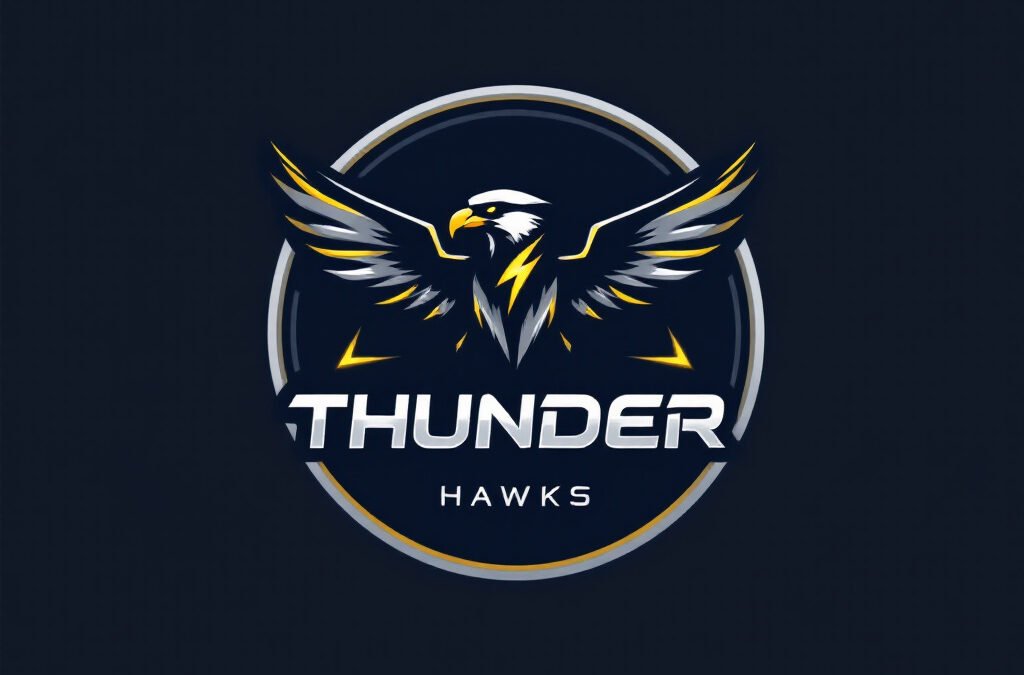
by James Dean | Feb 3, 2025 | Blogs, Branding Design, Gaming, Logo Designing, Sports Branding
The Emotional Connection Behind Sports Logos
Sports logos hold a significant place in the hearts of fans, serving as symbols of identity, pride, and belonging. They evoke powerful emotions, creating enduring connections between teams and their supporter base. These logos are more than mere graphical elements; they are visual narratives that encapsulate a team’s history, values, and mission. For example, the distinctive interlocking ‘NY’ of the New York Yankees is steeped in tradition and success, resonating deeply with generations of fans who identify with the team’s legacy. Similarly, the Chicago Bulls logo has transcended its original context to become an emblem of resilience and excellence, attracting not only basketball enthusiasts but also those who appreciate its cultural significance.
The storytelling aspect of sports logos plays a crucial role in fostering these emotional bonds. Through unique designs, colors, and typography, logos can convey a message about a team’s character, aspirations, and community. Fans become emotionally invested when they perceive a logo that resonates with their own identities, whether through shared geographic ties or values represented by the team. This connection is pivotal in establishing loyalty, as supporters display their allegiance through merchandise, team colors, and participation in events.
Furthermore, versatility in logo design is essential for maintaining this emotional connection across various platforms. A successful logo must adapt seamlessly to diverse mediums, from digital applications to physical merchandise, without losing its impact or emotional resonance. As fan interactions shift towards online environments, the importance of a coherent and versatile logo cannot be overstated. Ultimately, the effectiveness of a sports logo lies not only in its aesthetic appeal but also in its capacity to encapsulate the essence of a team, forging lasting relationships with fans and the community at large.
Modern Trends in Sports Logo Design
In recent years, sports logo design has undergone a significant transformation fueled by the advancements in digital branding and the increasing importance of visual identity across multiple platforms. This evolution is marked by several key trends that are reshaping how logos are created and perceived in the sports industry.
One prominent trend is the rise of minimalism. Many teams and organizations are gravitating towards simpler designs that prioritize clarity and versatility. This approach not only enhances aesthetic appeal but also ensures that logos maintain their integrity across varying sizes and applications, from digital screen displays to merchandise. Minimalistic logo designs often utilize fewer colors and streamlined shapes, allowing for instant recognition and easier reproduction in various marketing materials.
Furthermore, the shift towards cleaner and more adaptable designs represents a broader move to address the demands of contemporary marketing. As digital presence takes precedence, logos must be versatile enough to perform well across different media, such as social networks, mobile applications, and websites. This adaptability ensures that a logo retains its effectiveness whether displayed as a small icon or in a larger format.
Another significant trend is the growing use of bold typography. Innovative typographical choices can add personality and distinctiveness to sports logos, making them more memorable. With typography becoming a focal point in design, organizations are experimenting with custom fonts and lettering styles that reflect their brand identity and resonate with their audience.
Lastly, the incorporation of dynamic motion effects is gaining traction. As sports logos increasingly find their way into digital platforms, motion graphics can enhance their visual appeal. By implementing subtle animations, logos can create an engaging user experience that sets them apart in a crowded marketplace. These motion elements not only capture attention but also convey a sense of energy and movement associated with sports.
As the sports industry continues to evolve, the trends in logo design illustrate the need for brands to remain relevant and impactful in a fast-paced digital landscape.
The Role of Technology in Logo Creation
The emergence of technology has significantly transformed the realm of sports logo design, allowing teams and brands to create striking visuals that resonate with their audience. Previously, logo design was constrained by the skills and resources available to graphic designers, which often made it challenging for smaller teams or individuals to achieve a professional look. However, with the advent of digital tools, such as logo makers and generators, the process has become considerably more accessible.
These advanced platforms empower non-designers by providing user-friendly interfaces that allow them to experiment with various design elements, such as colors, fonts, and shapes. As a result, even those without formal design training can create logos that meet their aspirations and brand identity. This democratization of design fosters creativity across the board, enabling teams at all levels to develop logos that encapsulate their vision.
Moreover, the speed of creation facilitated by digital tools cannot be overstated. Unlike traditional methods that could take weeks to finalize a design, sports logos can be developed in a matter of hours or days. This rapid turnaround time is particularly beneficial for organizations that need to adapt quickly to changes in branding or marketing strategies.
Financial considerations also play a vital role in the shift towards digital logo creation. Many logo makers offer free or low-cost options, allowing users to experiment without significant financial risk. This innovation encourages the exploration of various concepts, leading to more refined and impactful designs. Popular platforms like Canva, Adobe Spark, and Looka are examples of how technology empowers a new generation of logo designers, making the creation process not only efficient but also enjoyable.
In summary, the role of technology in sports logo creation has reshaped the landscape of branding. By leveraging digital tools, a wider audience can engage in the design process, fostering creativity and accelerating the development of professional logos.
Case Studies: Successful Sports Logos in Action
The significance of sports logos in establishing brand identity and fostering fan engagement can be clearly observed through several case studies of notable sports teams and organizations. One prominent example is the New York Yankees logo, which features a simple yet iconic interlocking “N” and “Y.” This emblem, unchanged since 1909, effectively conveys a sense of tradition and excellence, resonating deeply with fans. The logo’s timeless appeal has contributed substantially to its merchandise sales and solidified the team’s standing as a cultural icon.
Similarly, the Chicago Bulls logo is another exemplary case of effective sports branding. Launched in 1966, the bull’s head design embodies strength and tenacity, key attributes that fans associate with the team. The logo’s bold red and black color scheme not only grabs attention but also evokes a sense of pride among supporters. Over the decades, the Bulls have leveraged their logo in innovative marketing strategies, resulting in increased visibility and enhanced emotional connections with the fanbase.
In contrast, newer teams like the MLS’s Atlanta United FC have demonstrated the effectiveness of modern logo design in engaging fans. Their crest, which combines a striking black and red color palette with a prominent golden “A,” mirrors the city’s vibrant culture and energy. The club’s approach to their logo has facilitated a fresh narrative in branding, empowering them to quickly amass a dedicated following within a short time frame since their inception in 2014.
Moreover, historic logos such as the Boston Red Sox’s “B” have seen evolutionary modifications that maintain relevance in contemporary branding while respecting tradition. This balance between nostalgia and modernity exemplifies how teams can evolve their logos to appeal to newer generations without alienating long-time fans.
These case studies collectively underscore the multifaceted role that sports logos play in marketing strategies, fan engagement, and brand identity, illustrating their powerful impact on audience perceptions and connection to the teams they represent.
-
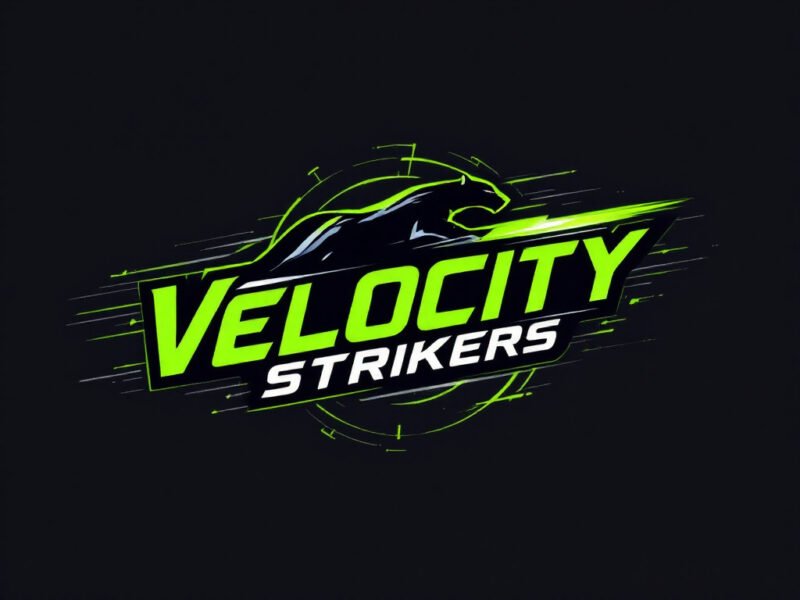
-
Velocity Strickers, Sports Logo Design
-
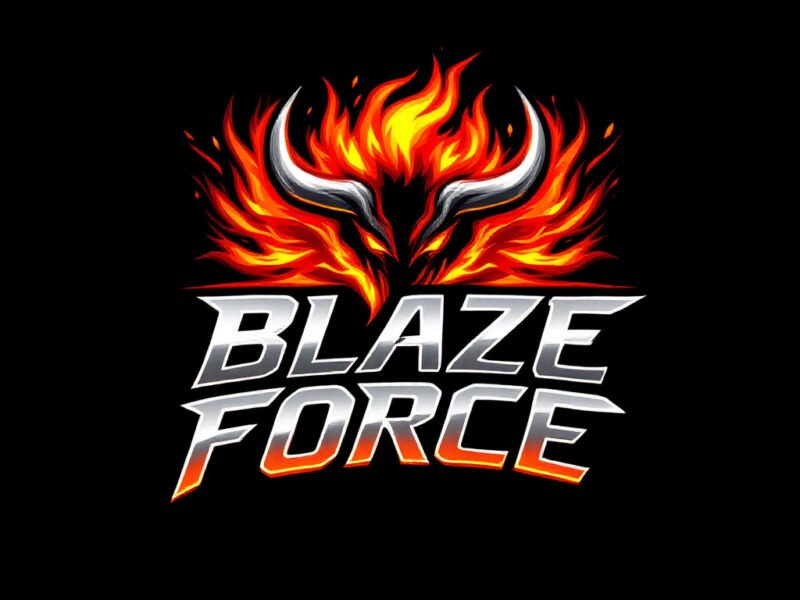
-
Sports Logo, Blaze Force logo design
-
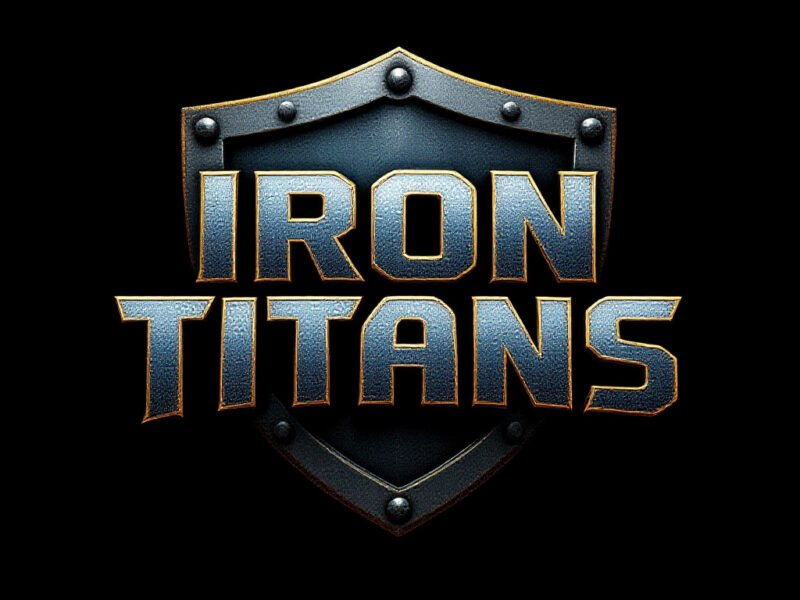
-
Sports Logo design, IRON titans
-
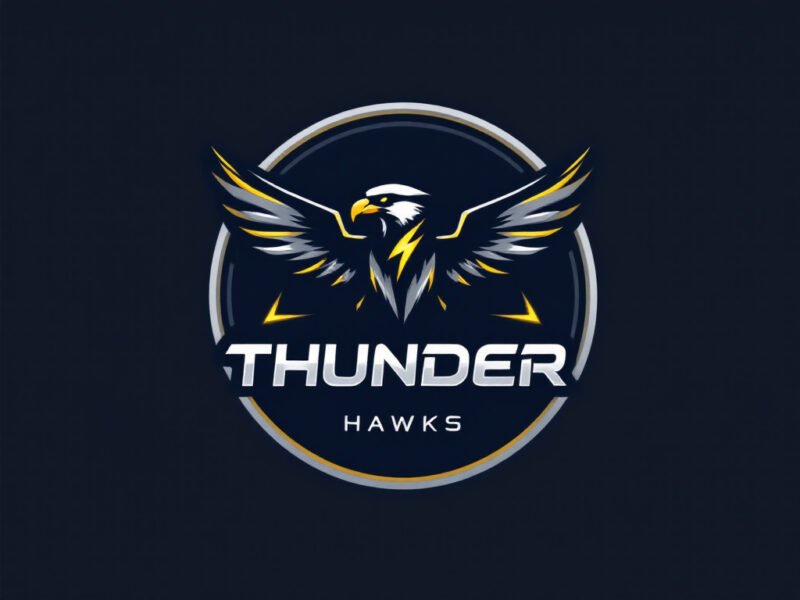
-
Sports Logo Design, Thunder Hawks.
-
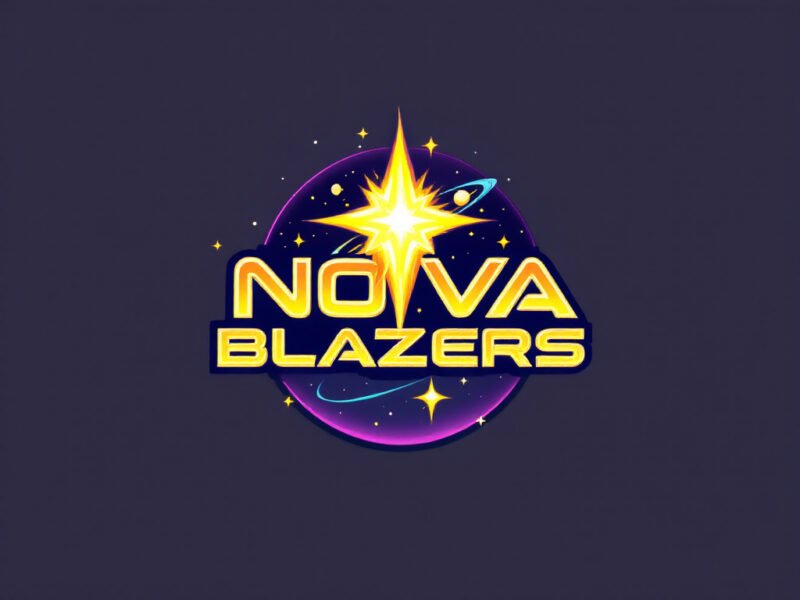
-
Sports Logo Design, Nova Blazzers
-

-
Sports Logo Design Summit Wolves
Recent Comments